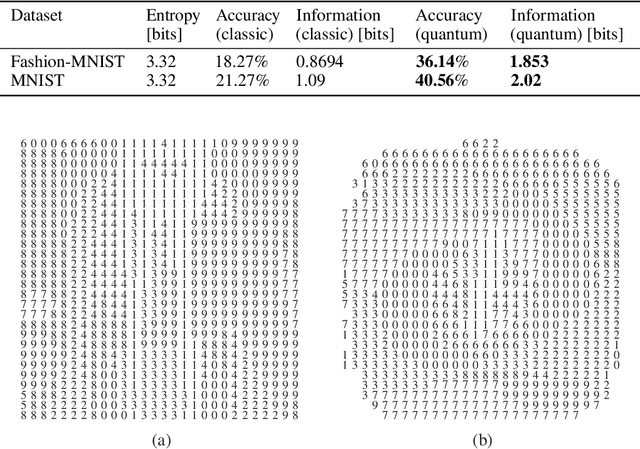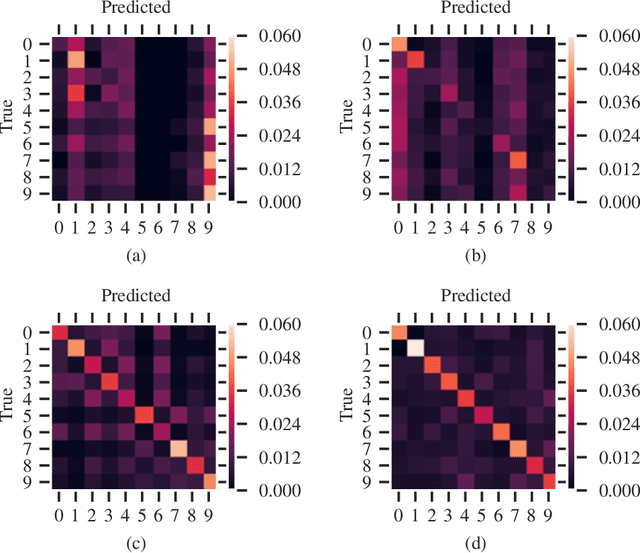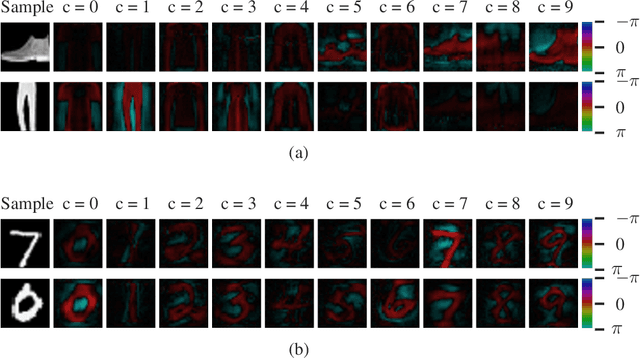Single-Photon Image Classification
Paper and Code
Aug 13, 2020



Quantum computing-based machine learning mainly focuses on quantum computing hardware that is experimentally challenging to realize due to requiring quantum gates that operate at very low temperature. Instead, we demonstrate the existence of a lower performance and much lower effort island on the accuracy-vs-qubits graph that may well be experimentally accessible with room temperature optics. This high temperature "quantum computing toy model" is nevertheless interesting to study as it allows rather accessible explanations of key concepts in quantum computing, in particular interference, entanglement, and the measurement process. We specifically study the problem of classifying an example from the MNIST and Fashion-MNIST datasets, subject to the constraint that we have to make a prediction after the detection of the very first photon that passed a coherently illuminated filter showing the example. Whereas a classical set-up in which a photon is detected after falling on one of the~$28\times 28$ image pixels is limited to a (maximum likelihood estimation) accuracy of~$21.27\%$ for MNIST, respectively $18.27\%$ for Fashion-MNIST, we show that the theoretically achievable accuracy when exploiting inference by optically transforming the quantum state of the photon is at least $41.27\%$ for MNIST, respectively $36.14\%$ for Fashion-MNIST. We show in detail how to train the corresponding transformation with TensorFlow and also explain how this example can serve as a teaching tool for the measurement process in quantum mechanics.
 Add to Chrome
Add to Chrome Add to Firefox
Add to Firefox Add to Edge
Add to Edge